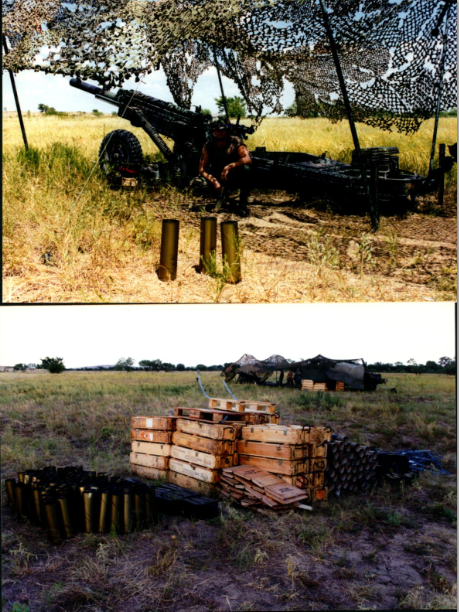Big...;
It's more than a bit open-ended, but!
IF we are talking about what happens to brass casings... anything from very slightly sooted at the immediate opening up to seriously dirty and even heat-burnished (annealed). Denting is optional but when a casing is thrown, quite possible. Big brass casings are quite similar to little, small-arms brass casings.
The fired casings will ALWAYS look a little less bright and clean than a new round (unless of course we're talking something like one of those loose dirty rounds seen lying around in a turret-basket or something on a Syrian T-55!). And a fired casing will ALWAYS be dirty INSIDE.
Howitzers and other "medium-to-lower pressure" guns may cause less annealing than a big AT rifle might.
Modern big-gun ammo can be quite a range of case and projectile colors when going in.
To see what different types of modern ammo look like - Google subjects like "Artillery", "Artillery in (and name a war - Syria, Afgan., etc.)", "tanks in Syria", and other queries to see tanks, big guns, etc. You will see many things in the Images. Look for Merk crews or M1A or other crews loading rounds, handling ammo, etc., and look at the ready-use stock behind howitzers and field guns. The Google potential is huge - just keep trying different queries - and follow leads provided among images when you see "view more" in an image- box.
You will see a LOT of different types of stuff - separate charges (w or w/out casings), cartridges w brass casings, painted casings, many different projectiles, etc. LOTS of stuff. Each army has its own codes and color-schemes for different types of rounds for different weapons.
Eventually you, too, will reach some saturation-point!

Cheers! Bob

PS: I always lightly-soot and lightly heat and anneal my "used" real brass casings. I think it adds a little "life" and deters viewers from thinking that I simply dropped a couple casings onto a build from some package, as if they were just big salt crystals!

To the extent possible, I try to make painted plastic "brass" casings also look sooted and annealed.































 To the extent possible, I try to make painted plastic "brass" casings also look sooted and annealed.
To the extent possible, I try to make painted plastic "brass" casings also look sooted and annealed.